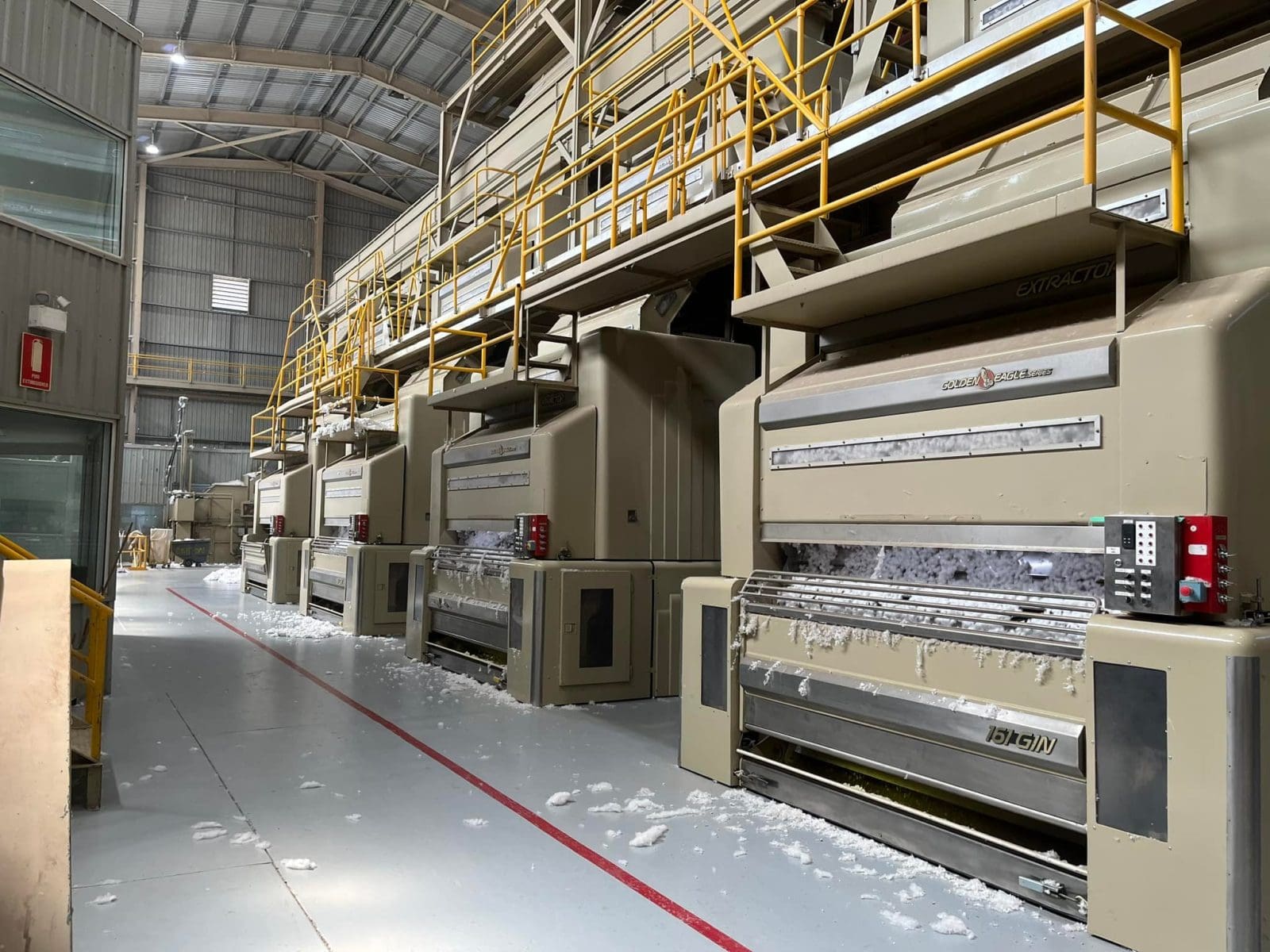
Australia is expected to have 34 out of 41 cotton gins operating this season. Photo: Qld Cotton
AUSTRALIA’S cotton ginning industry sees innovation and new business strategies as key to navigating shifting industry and economic conditions in the seasons ahead.
Speaking at the Post Farm-Gate Forum in Toowoomba on March 19, Australian Cotton Ginners’ Association president Ben Suttor said the industry’s challenges reflected broader trends across the manufacturing sector.
He argued that four key issues needed to be addressed: the “plateauing” of production efficiency gains; increased fixed costs leading to higher breakeven volumes; inflationary pressures, and sector rationalisation.
“We’ve done extremely well; we’ve lifted productivity, and we’ve invested over $250 million in private investment into the gins over the past couple of decades,” Mr Suttor said.
“The cotton gins have all done extremely well to lift productivity, but we’re plateauing out.
“We need a solid injection of innovation and automation, and an ability to manage our high electricity infrastructure costs.”

Australian Cotton Ginners’ Association president Ben Suttor speaking at the Australian Cotton Shippers’ Post Farm-Gate Forum at Toowoomba.
Mr Suttor said about 10 years ago, the “breakeven” target to operate a typical four-stand cotton gin was $30,000, while “in today’s world we are looking at more like $75,000”.
He said increases to fixed costs, electricity charges, labour and insurances were all part of the picture impacting cotton-processing viability.
“It’s a lift…in the general cost of doing business that we are all experiencing.”
Mr Suttor said that alongside rising ongoing costs, ginners were no longer seeing the productivity gains from capital investment that they had in previous decades.
“The ability to spend $1M and achieve a production efficiency has vanished.
“Ten years ago, or even five years ago, we were putting out capital and we were getting a tick of approval for things that could produce an extra five bales an hour.
“You can’t do that now for $1M.”
Less gins for bigger crops
Australia currently has 41 gins, including the soon-to-be-opened Ord Valley facility, with 34 expected to operate this season.
These gins will process the coming Australian crop which is expected to be just shy of 5 million bales.
This above-average crop comes on the back of a 5.1Mb crop in 2023-24 and a 5.6Mb crop in 2022-23 which stretched typical ginning operating periods, especially in the Riverina.
In comparison, the United States, one of the largest global cotton producers, has about 400 operational gins to process a 15Mb crop.
Mr Suttor said this gradual reduction in gin numbers, despite strong production, was an example of ongoing rationalisation in the sector.
“We had a shot across the bow in 2018, when some cotton was sent overseas in a seed form.
“I know that will put a distaste through the industry and it’s not something we want to see again.
“Shooting forward to 2040…will there be 34 gins operating?”
Vision for the future
Mr Suttor said the sector needed to plan for 2040 and collectively examine how it wanted to operate into the coming decades.
He said industry had modelled several scenarios based on the current number of operational gins, a rationalist approach, and a capitalist model.
The current model, with 34-40 gins in operation, has a breakeven of 75,000-100,000 bales.
Under this system, growers face little to no additional transport costs, and ginning wait times are minimal.
Under a low-level rationalist model, 25 gins would remain in operation, each with a breakeven of 150,000 bales.
Growers would face estimated transport costs of $6-$12 per bale and wait times extended by an additional 30 days.
A shift to a capitalist model could see the industry consolidate to five mega-gins running year-round, with a breakeven of 250,000 bales, added transport costs of over $24/bale for growers, and wait times extending by an additional 120 days.
Mr Suttor said any of these scenarios could become reality over the next two decades, and it was up to the industry to weigh the challenges and benefits of each potential outcome.
Funding processing efficiencies
He said that with ongoing inflationary pressures and a shifting manufacturing landscape in Australia, the cotton-processing sector needed to find innovative ways to invest in boosting the productivity of their facilities.
“Do we need to be promoting regional jobs and regionally processing, because that’s what we are?”
Mr Suttor said Federal Government programs, like the National Reconstruction Fund, could offer opportunities to provide partial funding for new types of ginning investments, such as for green energy, waste management, traceability and overall facility modernisation.
“It’s all about thinking forward to 2040.”

HAVE YOUR SAY